Here’s the latest reader question, along withmy reply!
Huy writes: I was watching your old clip with the AMSOIL for the 2nd generation Trans-Am. I’m wanting to add a last car to my collection. Can you tell me which Trans-Am from the second generation would you recommend? I know the 455 is the better motor to get but they are so expensive. I was going to go over to the 400 motor but see some had had either Pontiac or Oldsmobile motor. So which year or motor would you recommend?
My reply: Every now and then, I get a question that makes me snap my knuckles with satisfaction! This is one of them, being something of a maniac as regards the second generation(1970-1981) Firebird and Trans-Am.
As you probably know, 1976 was the last year a 455 was available from the factory and only in very limited numbers. The last year a high-performance 455 was available was 1974 – and those (SD-455 Trans-Ams and Formulas) were offered in extremely limited numbers.
1971 was the first year for the 455 (designated 455 HO) and it was the standard (and only) engine in the Trans-Am that year and in 1972.
In 1973, two 455s were available – one a mild-performance unit, the other the very desirable, high-performance SD-455.
In 1974, you had three engines to choose from. The standard engine was now a mild-performance 400; there was an optional also mild-performance 455 and you could also opt for the high-performance SD-455 (final year for this engine).
1975 started with the Trans-Am coming only with the 400 – detuned to 185 hp. Mid-year, a 455 option (designated “455 HO” but not the same engine as the ’71-’72) appeared. It produced an advertised 200 hp and was paired only with a manual transmission.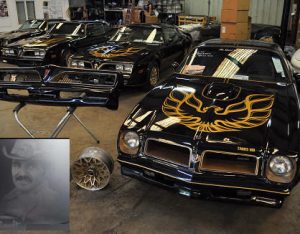
Beginning with the ’77 models, there were two Pontiac 400s available- the standard 400 and an optional high-performance version of the 400, initially rated 200 hp (to replicate the power output of the discontinued 455) vs. the standard 400’s 180 hp.
For the first time, there was also an Oldsmobile 403 on the roster, added to make up for the limited supply of Pontiac 400s.
The performance option 400 came with different identification decals on the shaker hood scoop. Cars equipped with the base 400 Pontiac and Olds 403 had a shaker that read: “6.6 litre” (spelled that way).
The optional 400 had “T/A 6.6″on the shaker.
The base 400 and Olds 403 were was not offered with a manual transmission but the optional 400 initially came either with the 4-speed manual or a performance calibrated THM 350 automatic. The latter are pretty rare – and so desirable.
The same basic lineup continued for 1978, though the “T/A 6.6” 400 was uprated to 220 hp.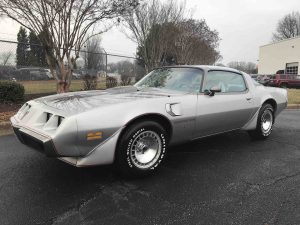
1979 was the last year for the Pontiac 400 – and only the “T/A 6.6” performance version of it, sold only with the four speed manual. The base engine became the Olds 403.
For the final two years of second generation production, the Trans-Am came with two versions of the new 301 (4.9 litre) V8, one with a turbo, the other not – and a Chevy 305 V8s. Cars with the turbo 301 were all automatic only.
The 1981 Trans-Am is historic because it was the last Trans-Am to come equipped from the factory with a Pontiac V8. The Trans-Am continued to be built until the early 2000s – but all Trans-Ams built after 1981 are mechanically identical to their Z28 Camaro cousins.
Okay! So which do I recommend – and why?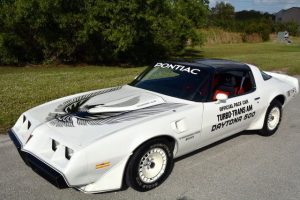
The early (1970-74) cars are all desirable, regardless of engine, due to their lower production numbers and because they were all higher-performance than the ’75-81 cars, which came with catalytic converters (1975 was the first year) and single exhaust (even the ’77-79 “T/A 6.6” cars, which had dual mufflers aft of the single catalytic converter).
The good news is that the “smog” (as they were called) ’75-up 455 and 400s could be easily modified to recover much of the lost performance, as by installing a true dual exhaust system, tuning the ignition and carburetor, etc.
Many parts from the earlier, higher-performance Pontiac V8s such as cylinder heads (to achieve higher compression) physically bolted right up – though be aware that the ’70 Ram Air III 400, the ’71-72 455 HO and the ’73-74 SD-455 are round port engines; all other Pontiac V8s are “D” port engines. Still,many parts directly interchange and there is a wealth of aftermarket performance parts available for all Pontiac V8s except the 301.
Though this engine is a Pontiac engine it is an entirely different engine and no parts interchange with the earlier Pontiac V8s; there are also almost no aftermarket performance parts for this engine.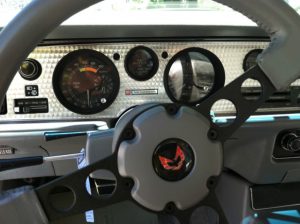
I think the ’75 and ’76 cars are among the most desirable of the “second half” of the second generation – because they are the final years for the availability of the 455 and also the final years for the single round headlight and the factory Honeycomb wheels, which look like aluminum alloy wheels but aren’t.
The ’75 and ’76 also have unique, one-year-only front clips. 1976 was also a neat year because of the availability of unusual colors such as Carousel Red and Goldenrod Yellow.
The pick of the above litter in my view would be either the ’75 with an “HO 455” or a ’76 with the 50th Anniversary package, which was the first year for the black and gold paint scheme made famous in ’77 via the Smokey and the Bandit movie.
The ’76 50th Anniversary cars could be had with either the 400/manual, 400 automatic or the 455/manual combo. (The “455 HO” decals were replaced with “455” if the car was so equipped; if it had the 400, the decal read “400.”)
1976 was also the first year T-tops were available – only with the 50th Anniversary cars. But these tops were not factory installed. They were aftermarket Hurst tops installed after the car was built; the Hurst tops are smaller – and leakier – than the larger Fisher tops that were available with the later cars.
Obviously, any ’77-79 TA with the “T/A 400” is desirable, especially the ’77-78 models with the automatic and the ’79 with the manual. But don’t overlook the base 400 – or the Olds-powered version. They both have potential for much more performance and are collectible in their own right. You’re also likely to get more (nicer) car for your money.
I would also not rule out an ’80-81 with the 301, especially the turbo versions. Especially if you can find a preserved/original condition example. These are really neat, good-looking cars (note the cool off-center turbo hood bulge) and while not fast, they are fun to drive. The handling is very good (especially if the car has the WS6 package, with 15×8 snowflake wheels) and these cars are among the first American cars to have come with four wheel disc brakes, too. There were NASCAR and Daytona pace car editions in very attractive white/charcoal paint schemes with turbine wheels.
Much of your decision will be personal – coming down to which “look” you like best. Given that the last second-gen TA is now almost 40 years old, all second generation Trans-Ams are historic/collectible and neat cars to own.
If you drive a selection of them, you’ll find the ’70-72s are harder-edged (no mild-performance versions) while the ’73-74 cars with the base engines and all the ’75-’81 cars are surprisingly easy-to-live with cars that practically anyone can drive comfortably. The ’80-81 cars especially are basically gran touring cars; Pontiac did a lot of work quieting them down, improving the ride and handling.
But I think you’ll be happy with any of them.
Here’s an excellent resource for in-depth technical/production data about the ’70-81 cars.
Keep us posted!
. . .
Got a question about cars, Libertarian politics – or anything else? Click on the “ask Eric” link and send ’em in!
If you like what you’ve found here please consider supporting EPautos.
We depend on you to keep the wheels turning!
Our donate button is here.
If you prefer not to use PayPal, our mailing address is:
EPautos
721 Hummingbird Lane SE
Copper Hill, VA 24079
PS: Get an EPautos magnet or sticker or coaster in return for a $20 or more one-time donation or a $10 or more monthly recurring donation. (Please be sure to tell us you want a magnet or sticker or coaster – and also, provide an address, so we know where to mail the thing!)
If you’d like an ear tag – custom made! – just ask and it will be delivered.
My latest eBook is also available for your favorite price – free! Click here. If that fails, email me at EPeters952@yahoo.com and I will send you a copy directly!










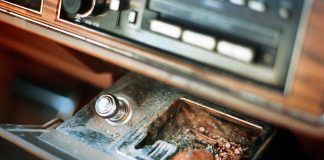
I need a bigger garage. Want.
https://bringatrailer.com/listing/1976-pontiac-trans-am-10/
Hi Anon,
That’s my car – in Goldenrod Yellow. It is a rare color – like Carousel Red (that’s my car) and I think either color really suits the ’76 TA, especially with the Honeycombs. I’ve always wanted a matched pair….
You may not want to look at this. Sold.
https://www.hemmings.com/auction/1976-pontiac-trans-am-1
Hi Anon,
This car and mine could be book-ends. Mine has the optional “custom” interior with “horsecollar” buckets; the car in the ad has the standard interior. Also, no electric rear defroster, power door locks or (I think) windows. Mine has all of that. But otherwise, almost twins.
I’ve had it since 1993… and intend to always have it!
’76 was an interesting year for the TA. Last year for the round headlights; last year for the pleated hood. Last year for the “polycast” Honeycomb wheels. One of just two years (IIRC) for Carousel Red and Goldenrod Yellow. Final year for the 455.
Hi Eric
first of all i would like to thank you for all your help with the questions i had. I was able to confirm that is a w72 car. Someone close to me told me by what you also pointed it that it can be possible it had another motor put in by the age of the car. After the getting the pictures the seller never responded back to me so i better let this one go. I saw he didn’t have a lot of good review either. By the time i have to fly out to see it and either drive it or ship it back going to cost some more money. Well thanks again i guess i’ll try to find something closer so i can do a better inspection than just pictures.
My pleasure, huy!
Especially because I love 2nd Gen. F cars so much 🙂
Keep looking. It’s best to wait until you find the right one than rush and end up with the wrong one. I’d personally try to stick with as original a car as possible as modded ones are often modded badly. The money spent on an original is almost always worth it.
Here’s an example of what I mean. This car – a ’79 Tenth Anniversary TA – in very original condition. It has the Olds 403 (note the “6.6 litre” callouts on the shaker; note also the oil filler neck at the front of the engine) and appears very stock/original. The price seems fair, too: https://www.youtube.com/watch?v=7yfolKVJ4C4&ab_channel=UniqueSpecialty%26Classics
Hi Eric
I was looking over the pics of the car and noticed something i didn’t see on others. Did all the trans am came with a total of 4 or 8 of the fender flares? I see there is a total of 8 on this car? 2 of each of the fenders.(one before and one after each wheel) Was this a factory option or aftermarket?
Hi Huy,
All ’70-81 Trans-Ams came with:
A three-piece chin spoiler consisting of a center section with two extensions on either front fender.
A spoiler just aft of each door, at the forward end of each rear wheelwell.
A three-piece rear “whale tale” spoiler with a center section and end caps.
These vary slightly in shape from year to year (e.g., the spoilers on the ’79-81 cars are larger and more angular).
thanks
well let me sit back a bit and see…he still hasn’t given me any more information about the cars after the set of pictures…well thanks for helping me so far i will look into it a bit farther…
thanks again.
Morning, Huy –
You bet! What are your thoughts on the automatic? I personally much prefer the Super T-10 four speed manual (my last TA had it) for the gear whine and the fun. But the automatic can be fun, too – and if the car is indeed an original W72 (T/A 6.6 400) with the THM350 automatic, you have a rare car in sight. Most of the T/A 400 cars were manuals, which was standard equipment (and the only equipment in ’79) and most of the survivor cars today seem to be manual-equipped.
The automatic used in the T/A 6.6 cars was different, too. It had a higher-stall torque converter and firmer shift calibrations. I’ve driven them and these cars can chirp the tires on the 1-2 upshift, which is cool!
Also wanted to mention: The ’70-81 cars are prone to rust in the rocker panel area and around the rear glass molding (water trap). Look at the underside of the doors. Be wary of fresh trunk/frame undercoating or spray bombing.
Hi Eric thanks for your information. I’m still waiting for a reply from the seller. If this car is a real 220 hp car i would think a great buy. Problem now is car is 2000 miles away and hard to take a look at in person.
I know this is off topic but i wonder how much longer can we use our gasoline car?
https://www.yahoo.com/entertainment/california-governor-gavin-newsom-bans-174438751.html
Hi Han,
The car looks good. The problem is that pictures can tell a story… a fairy tale story. Nothing meant against this particular car or seller. But due diligence is essential. Buying a classic car isn’t something one does remotely – at least, not absent total faith in the seller (and equanimity about that faith being misplaced, if it turns out to be). Given the expense involved with a purchase of this magnitude I would suggest the relatively small expense of traveling to see the car in person is well worth it.
Incidentally, make sure you consult reputable value guides before committing to a purchase. Sometimes, these cars are priced out of all reason.
you are correct..sometimes i wonder why that car has been sitting with him for a while now….over 400 people view it on line but still sitting there. This is the first time i seen it price at that price. Most are 10 to 15k more than his asking price.
Hi Huy,
It could be that the market for classic cars is badly depressed; I suspect that it’s so. But it could also just be a good deal. If you like the car based on what you’ve seen and the price seems right, I’d investigate further. Especially if you prefer thew automatic/400 combo, which is pretty rare (if it’s a W72, T/A 6.6 car).
Hi Eric
so if the valve cover is painted in Blue that means its the 403 motor instead of the 400 T/a 6.6?
Hi Huy,
Not necessarily – as regards the paint. The problem is these cars are now 40-plus years old and unless you find one with very low low miles in original condition, it is extremely probable the engine was modified/removed/rebuilt/reinstalled at some point.
The 403s, though,never had chrome valve covers from the factory. They are also very easy to tell from the Pontiac engine as the Olds engine looks physically different (also the air cleaner/lower shaker assembly). If you see an oil fill tube toward the front of the engine – just ahead of the intake manifold, it is an Olds engine. The valve covers are also shaped differently. Do an online picture search of the Olds engine and you will see what I mean.
Per your private email to me: I also wonder why the dealer has not published any pics of the engine compartment. This is one of the things a prospective buyer would be most interested in. Ask the dealer to take a few and send them to me privately and I will tell you whether I see anything amiss.
Hi Eric
so if the valve cover is painted in Blue that means its the 403 motors instead of the 400 T/a 6.6?
Hi Huy,
No – the standard/base 400 was also painted a light blue color. The high-performance option 400 was also painted this color but got a set of chrome valve covers in addition. They also came with a foam-insulated fuel line and had different cylinder heads; you can check the stamping numbers to confirm this (I have the reference books). Another way to check for an original T/A 6.6 (W72 option) 400 is to check the the rear axle ratio; these cars all had a performance ring and pinion (3.23 ratio).
This is from Han – Editor!
I saw you wrote the 78 model T/A has 220 hp from 77. Does that mean the automatic also?
Is there a way you can tell if the car has a 400 vs 403 motor?
I saw this one but have no clue which one it has without seeing the motor.
Yes! Check the VIN, which for this car is: 2W87Z8L12577
The fifth digit – letter – tells you which engine the car came with originally. Z is the fifth digit and it indicates the car came with the Pontiac 400. It would be obvious just by looking at the engine, though, because there are obvious external differences between the Olds 403 and the Pontiac 400 (for example, the Olds has an oil filler tube at the front of the engine; the Pontiac V8 has a filler cap on the driver’s side valve cover).
Now, the question is – which 400? It’s either the base 400 or the more desirable “T/A” 400; the stickers on the shaker indicate the latter – but the car has been repainted and it is common for the “T/A” stickers to be added. It is important to find out which 400 this car has because it affects the value greatly. I could tell you more if I could see the engine – there are tell-tales – but the ad doesn’t show any.
Try to get the dealer to send an underhood pic. If it’s a “T/A” 6.6 400, the engine will/should have chrome (not painted) valve covers and a foam-covered fuel hose to the carburetor. The exhaust – if original – should have two mufflers aft of the catalytic converter. The standard 400 had a singe transverse muffler mounted behind the rear axle with dual outlets. The rear axle should also have a 3.23 ring and pinion; the base 400 came with 2.41 or 2:56 rear gears.
Here is info to help decode second gen Trans-Am VIN numbers: http://www.transamworld.com/2genvins.php